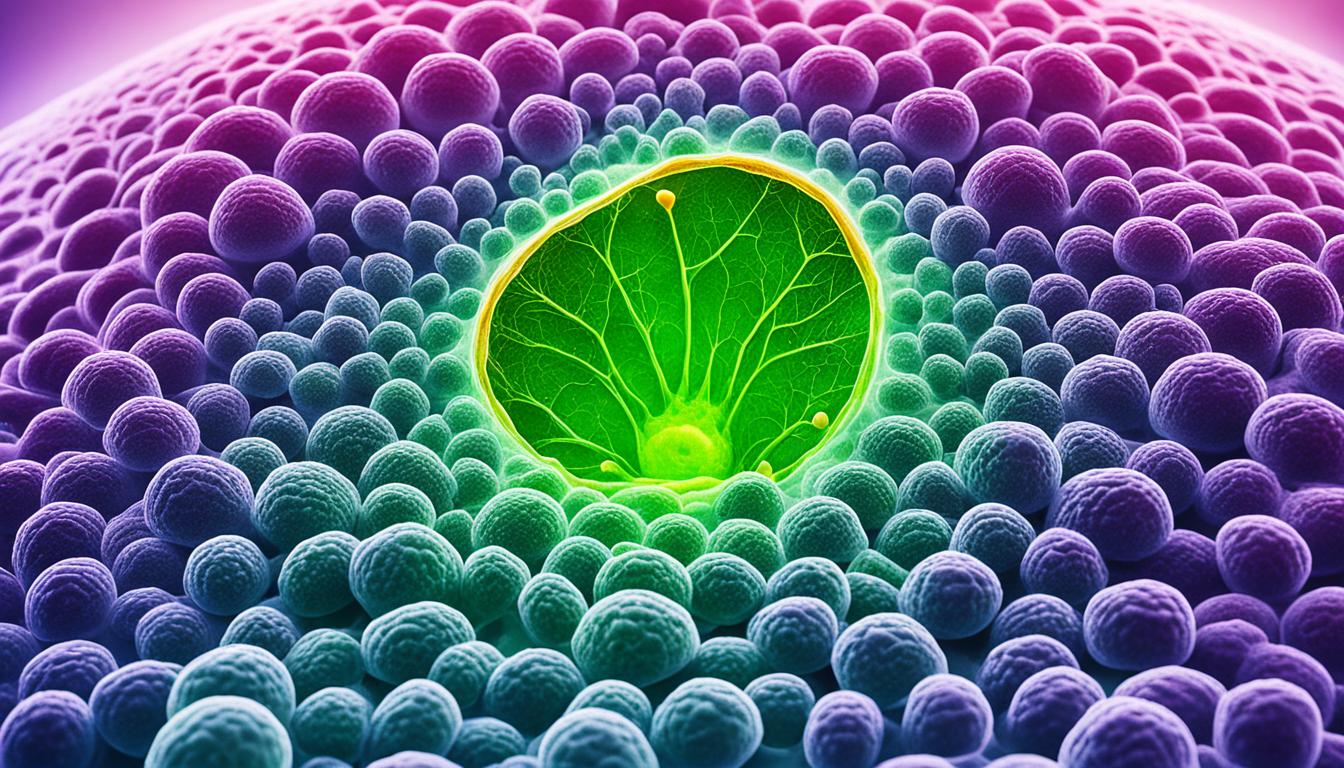Gallstones are a common issue, found in millions worldwide. In the U.S., about 20 million people between 20 and 74 have them. This condition can lead to several discomforting symptoms, which need the right treatment.
The usual signs of gallstones are stomach ache, feeling sick, throwing up, and a fever. Your skin might turn yellow, your pee could be dark, and your stools pale. These could mean you have gallstones, little hard pieces in your gallbladder made of cholesterol and bile.
Doctors use ultrasound and blood tests to find out if you have gallstones. An ultrasound looks at your gallbladder to see any stones. Blood tests check your liver and cholesterol levels. These tests are key to figuring out how to treat you.
There are different ways to treat gallstones, from medicine to surgery. Some medicines try to break down the stones. However, if you have a lot of pain or if it causes other problems, like blocking bile flow, doctors might suggest surgery.
Stem cell therapy is a new and hopeful way to deal with gallstones. Stem cells can help fix damaged parts of the body, like the gallbladder. This new method could make symptoms better by healing the gallbladder.
Key Takeaways:
- Gallstones are a prevalent form of gallbladder disease that affects a large number of people.
- Common symptoms of gallstones include abdominal pain, nausea, vomiting, and fever.
- Diagnosis of gallstones involves ultrasound imaging and blood tests to assess liver function and determine the presence of stones.
- Treatment options for gallstones include medication and surgical removal of the gallbladder through laparoscopic cholecystectomy.
- Stem cell therapy holds potential for regenerating damaged gallbladder tissue and improving gallstone symptoms.
Types of Gallbladder Disease and Their Symptoms
Gallbladder disease comes in various types like gallstones, cholecystitis, and chronic cholecystitis. Each type has its own set of symptoms and needs different treatments.
Gallstones
Gallstones are a common gallbladder issue. They are hard deposits in the gallbladder. Symptoms can change but often include:
- Sudden pain in the abdomen
- Nausea
- Vomiting
- Loss of appetite
- Fever
- Yellowing of the skin
- Dark urine
- Pale stools
- Itching
These symptoms might come and go, or they can be constant, depending on how bad the condition is.
Cholecystitis
Cholecystitis is the swelling of the gallbladder, often due to gallstone blockage in the bile ducts. It can cause more severe symptoms, such as:
- Intense pain in the abdomen
- Nausea
- Vomiting
- Fever
- Swelling in the abdomen
- Slight yellowing of the skin
Without treatment, cholecystitis can become very serious.
Chronic Cholecystitis
Chronic cholecystitis involves long-lasting swelling in the gallbladder. Its symptoms are usually not as intense as acute cholecystitis but still cause discomfort. Typical signs are:
- Recurrent episodes of sudden inflammation
- Upper body pain
- Occasional fever (not always present)
Managing chronic cholecystitis over time is needed to avoid complications and reduce symptoms.
Seeing a doctor is key to getting the right diagnosis and treatment for gallbladder disease.
Diagnosis and Treatment of Gallstones
Diagnosing gallstones involves various methods to accurately assess their presence in the gallbladder. One common method is using ultrasound imaging. It’s a non-invasive way that uses sound waves. This creates pictures of the gallbladder, helping doctors find gallstones and know their size and where they are. Ultrasound is picked because it works well, is safe, and is cost-effective for gallstone diagnosis.
Besides ultrasound, blood tests are crucial for diagnosing gallstones too. These tests check the liver’s health and cholesterol levels. High cholesterol can help make gallstones. By looking at blood samples, healthcare workers learn a lot about someone’s health. They also find out if gallstones might be present.
Sometimes, ultrasound and blood tests don’t give a clear picture. Then, more tests like CT scans or MRI scans might be needed. These tests look closer at the gallbladder. They help with an accurate diagnosis of gallstones.
After a diagnosis, the right treatment is picked based on symptoms and health effects. Gallstones that don’t cause problems might not need treatment right away. A doctor might recommend watching and changing lifestyle as first steps. But if gallstones cause symptoms or problems, surgery might be needed.
Laparoscopic cholecystectomy is a common surgery to take out the gallbladder. It is least invasive. Doctors make tiny cuts in the belly. Then, they use a special camera and tools to take out the gallbladder. This surgery is better than open surgery because it has a quicker recovery, less pain, and fewer risks. It’s often seen as the best choice for gallstone treatment.
| Treatment Options | Benefits |
|---|---|
| Conservative Management |
|
| Laparoscopic Cholecystectomy |
|
It’s very important to talk with a healthcare professional for an accurate diagnosis and a suitable treatment plan. Based on each person’s case, this step is crucial. Finding gallstones early and treating them on time can stop complications and ease symptoms.
Conclusion
Gallstones are quite common, affecting many people around the world. They can cause pain in the belly, nausea, vomiting, and fever. Doctors use ultrasound and blood tests to figure out if someone has gallstones.
There are different ways to treat gallstones. Doctors might give you medicine to help dissolve them. If the case is more serious, surgery could be an option. This surgery to remove the gallbladder is done with small cuts and is called laparoscopic cholecystectomy.
Recent studies look into using stem cells to treat gallstones. This treatment might help fix the gallbladder by regrowing its tissue. It’s an exciting area in gallstone care.
If you think you might have gallstones, it’s important to see a doctor. Getting diagnosed early and treated right away can prevent serious problems. It increases the chances of doing well in treatment.

